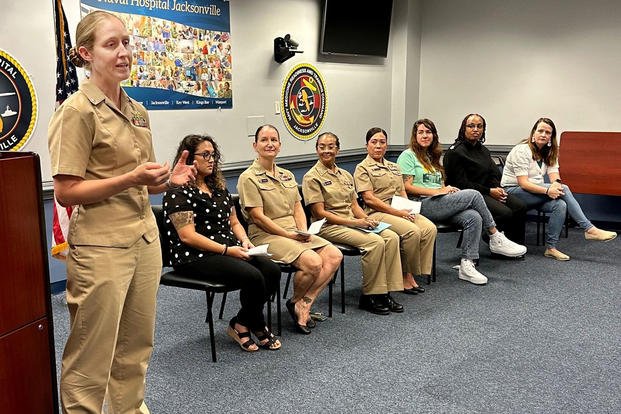The Navy is rolling out new teams that will hear female sailors' concerns, advocate on their behalf, and focus on recruiting and retaining more women in the fleet.
In an administrative message released Tuesday, the service announced the creation of Navy "Women's Initiatives Teams" that will try to "broaden awareness and influence policy changes to increase recruitment and retention of service women throughout the Navy."
The service has had groups similar to the women's initiative network aimed at tackling issues women were having in the Navy. But the ways those groups collected concerns or issues was more informal and often relied on either strong advocacy on behalf of sailors or groundswells of support on social media platforms.
Read Next: Wright-Patterson Air Force Base and Museum Planes Damaged in Suspected Tornado
Now, women will have "a formalized process for review of sailor suggestions and feedback on women's initiatives," according to Lt. Lewis Aldridge, a spokesman for the Navy's chief of naval personnel. The Navy Office of Women's Policy will meet, at a minimum, quarterly to hear from the newly created teams "on barriers and challenges faced by women throughout the fleet."
At its heart, the new policy orders 27 commands -- including the four main Navy fleets and all 17 community leaders -- to designate an officer and senior enlisted leader to head up individual teams at those locations to begin hearing input and feedback from sailors.
Aldridge added that other sailors are also able to join those teams. "You could be an E-3 or an E-1. ... You can also be a civilian, you can also be a male -- it's not restricted to female sailors," he said.
Smaller commands, such as individual ships or squadrons, are not required to stand up their own teams, but Aldridge said that sailors are "absolutely encouraged to start your own local command Navy WIT."
The idea itself is not novel. The Army and the Air Force both have similar programs on the books. However, the initial reaction from sailors appeared to be positive.
Alexis Travis, a Navy supply corps officer who regularly posts on service topics on Instagram, said that the new policy is "great for a bunch of reasons" in a video clip Tuesday.
"It means that you don't have to know the right person to call because there will be a structure around how we can provide feedback quickly," Travis said.
Both Travis and Aldridge cited the Navy's move to ditch the postpartum pregnancy test as an example of policy changes that teams can advocate for in the future. Aldridge also pointed to the Navy's recent uniform changes that gave women the ability to again wear the beloved "bucket" cover, female-tailored T-shirts, and eyelash extensions.
While these teams will meet at least four times per year, Aldridge wasn't able to say whether those meetings will also correspond to regular policy changes or rollouts. "I think it will be an 'as they come up'" situation, he said.
But "this is a new process -- it's something new for the Navy, and it's something exciting and so I think that, as this gets off the ground and running, we'll adjust the rudder as needed," he added.
Related: Navy Lifts Ban on Sailors Putting Hands in Pockets, Rolls Out Various New Uniform Changes












